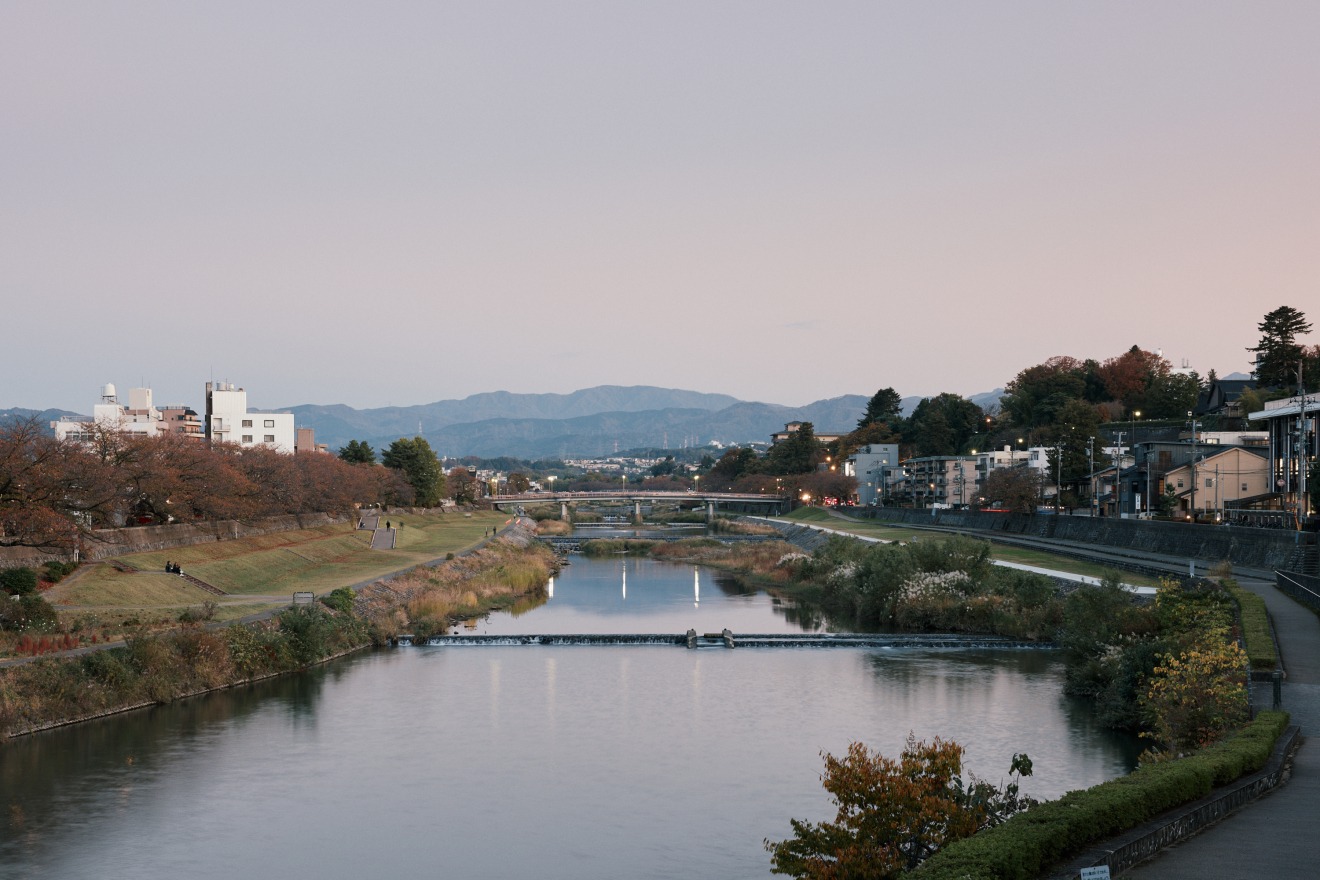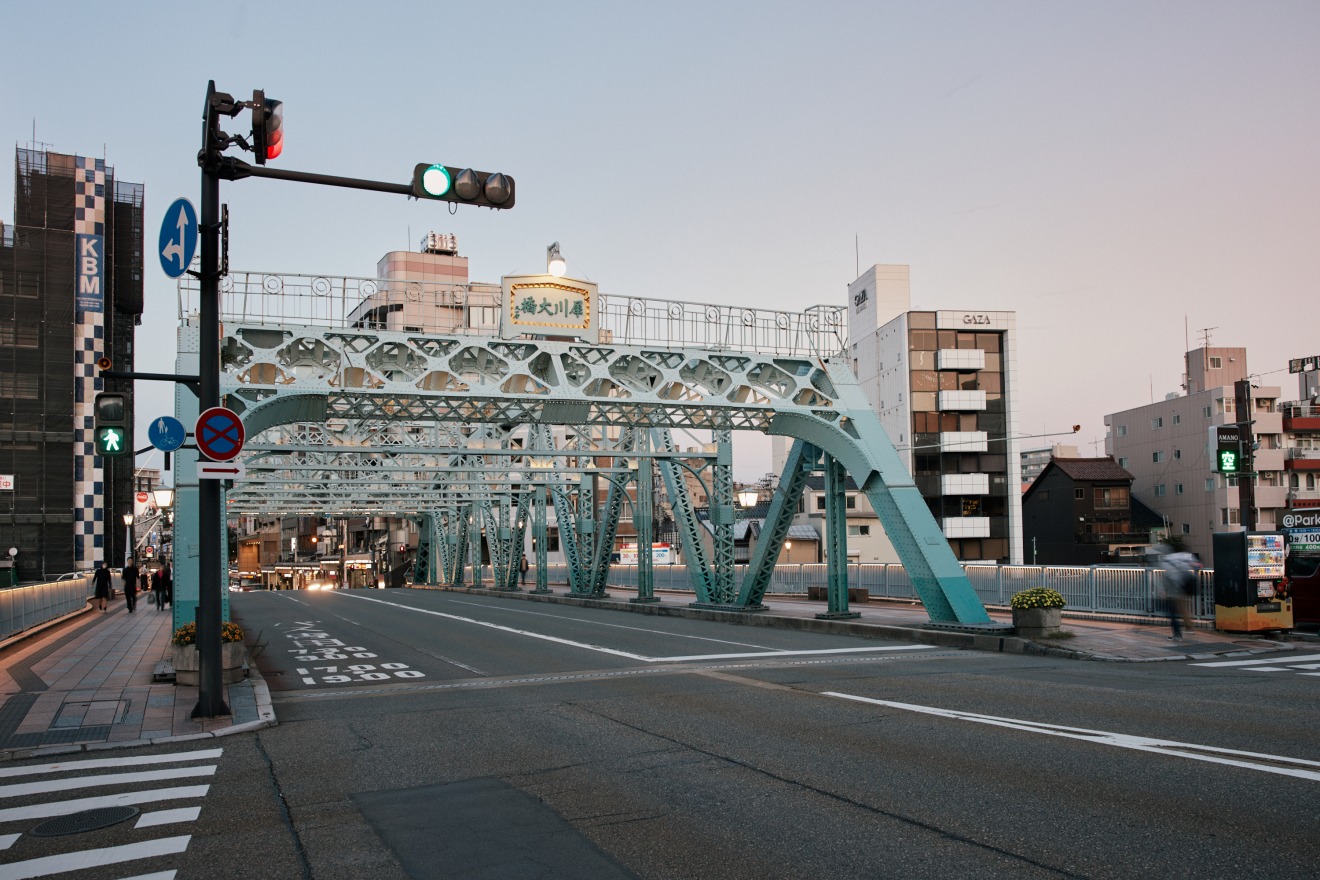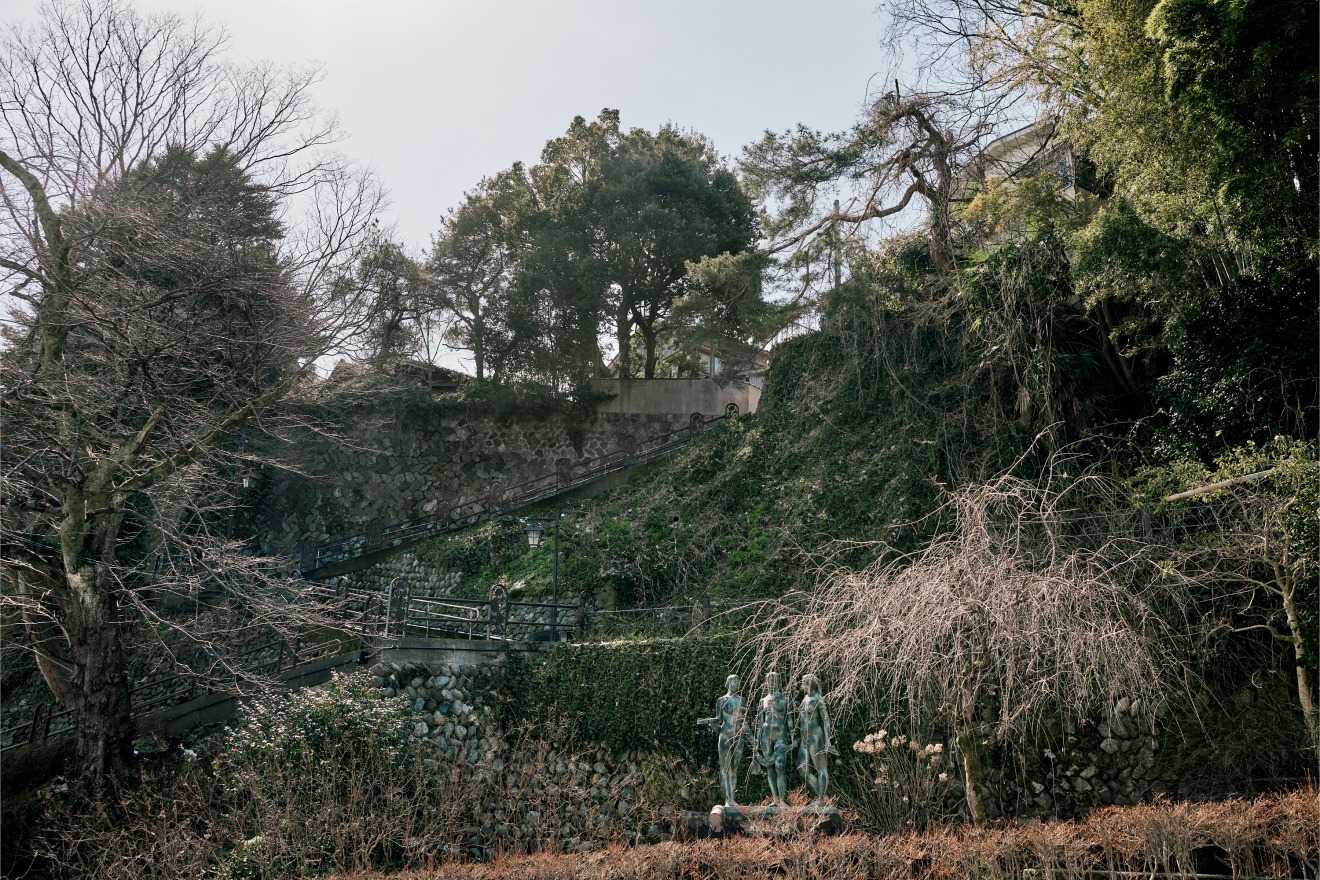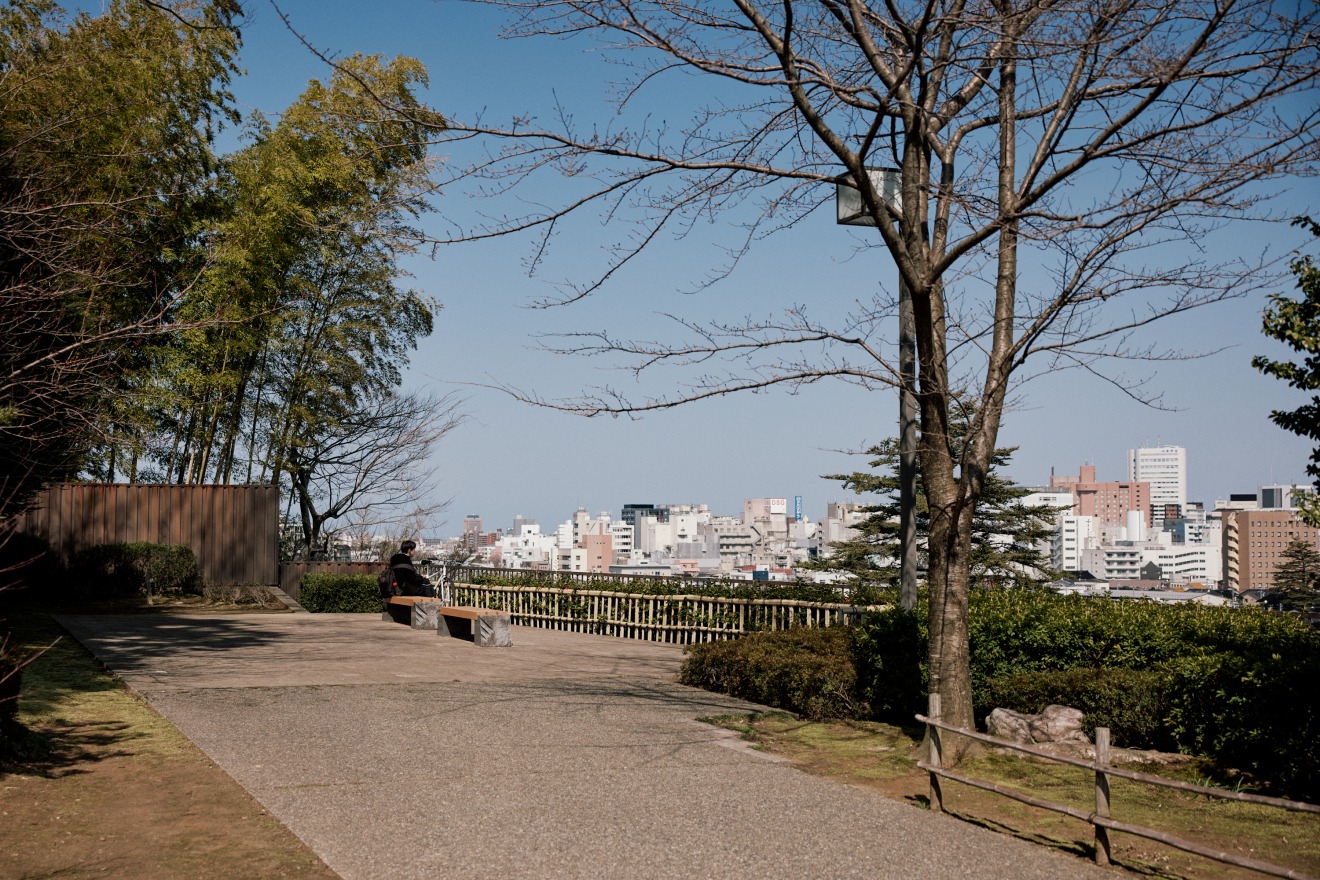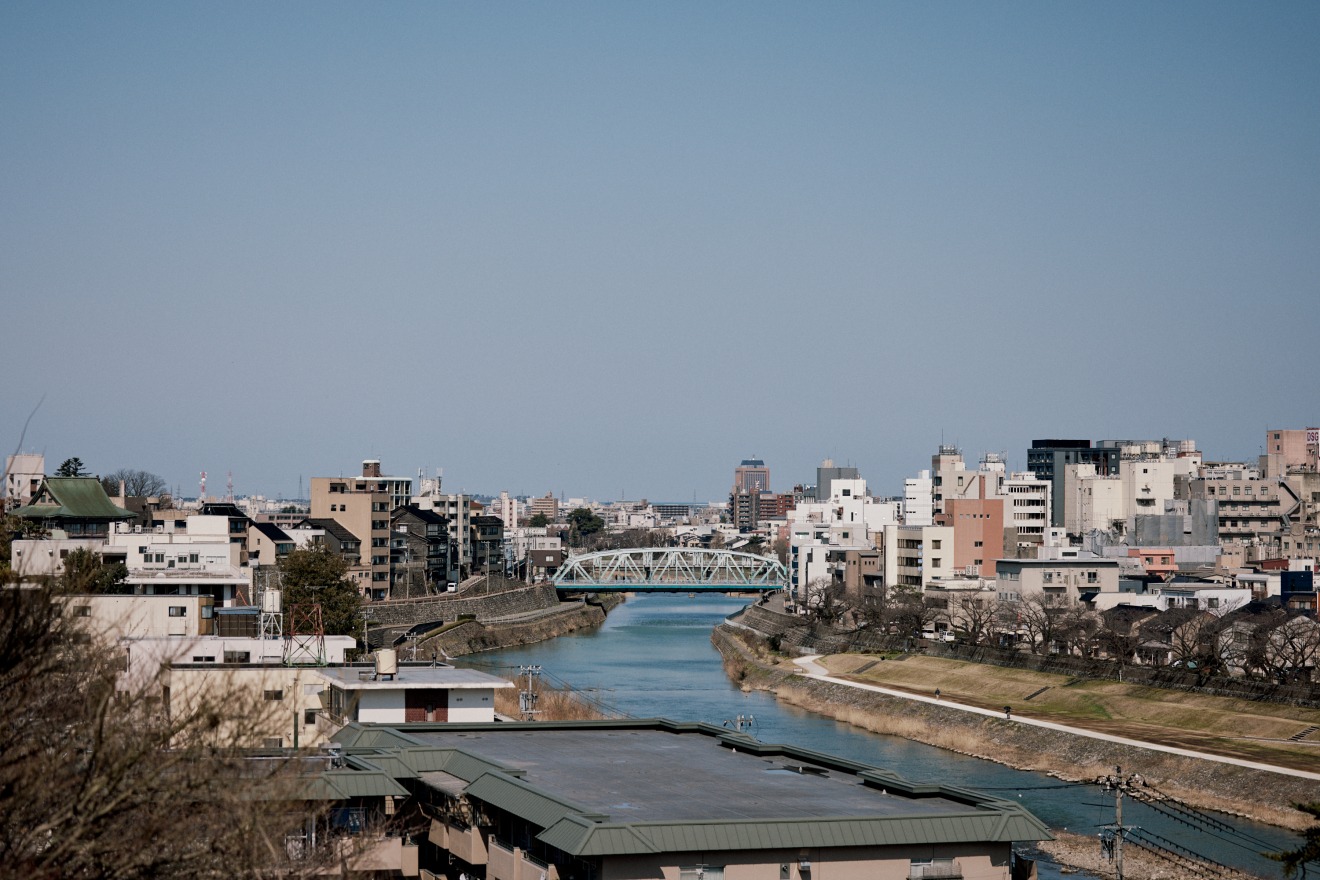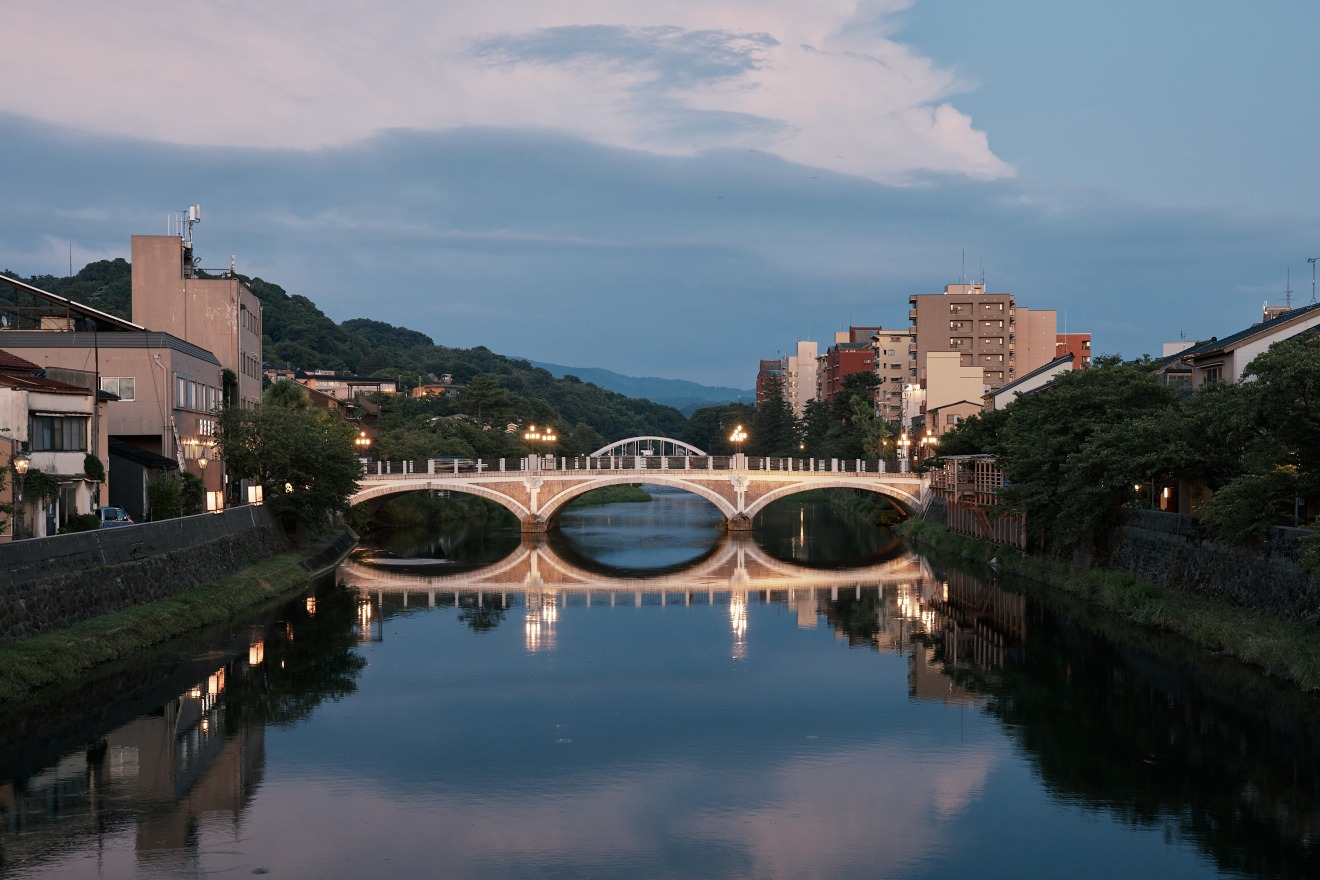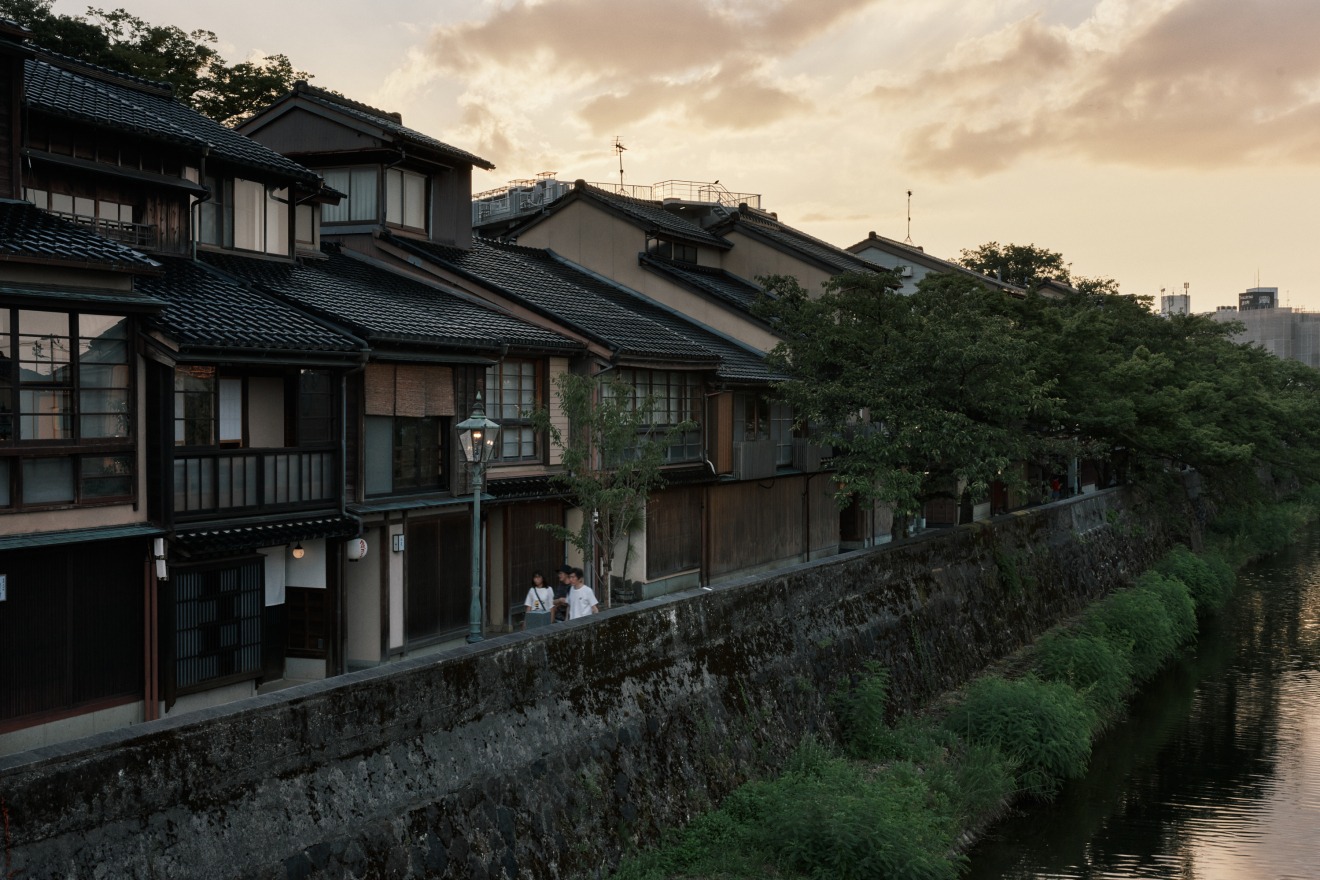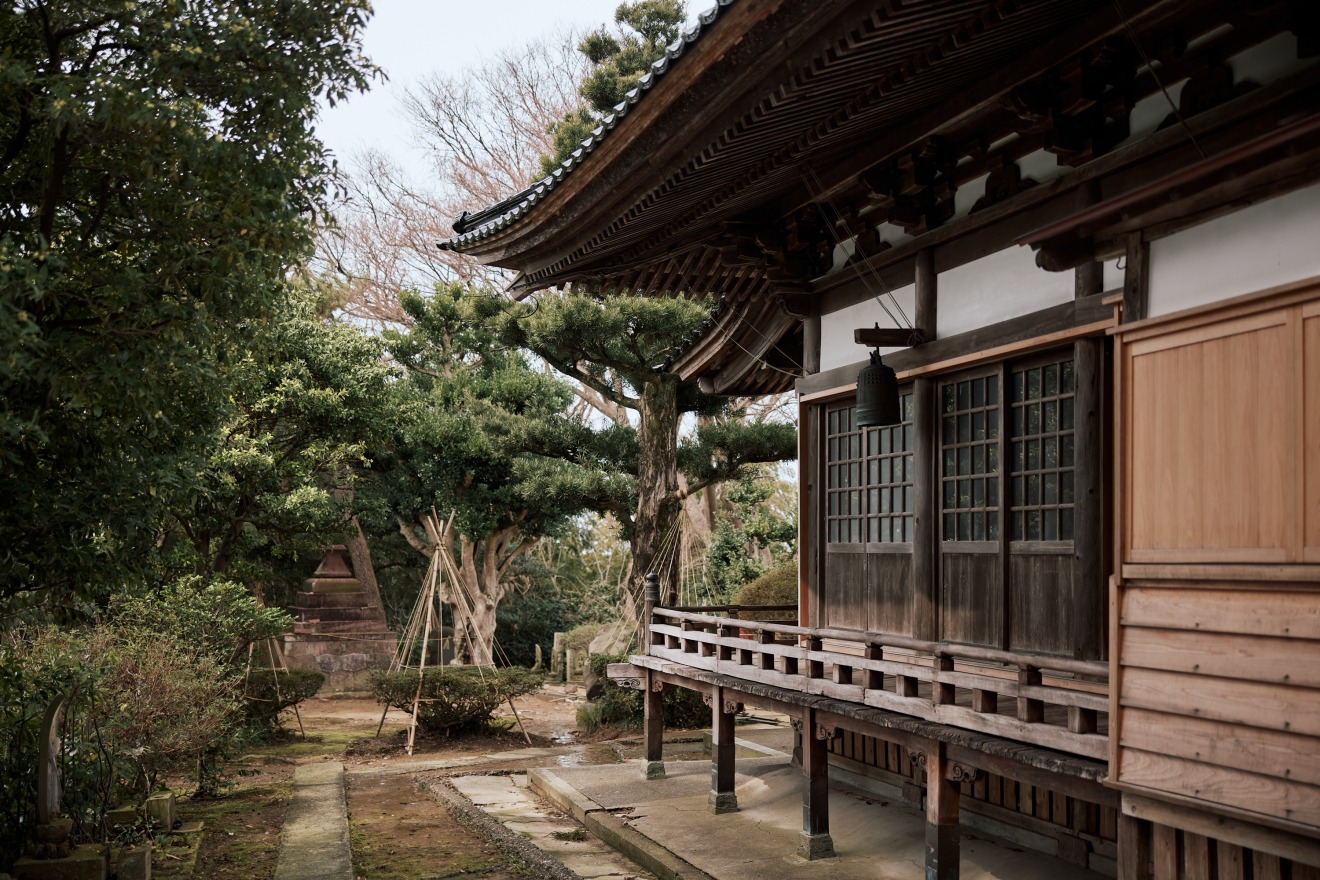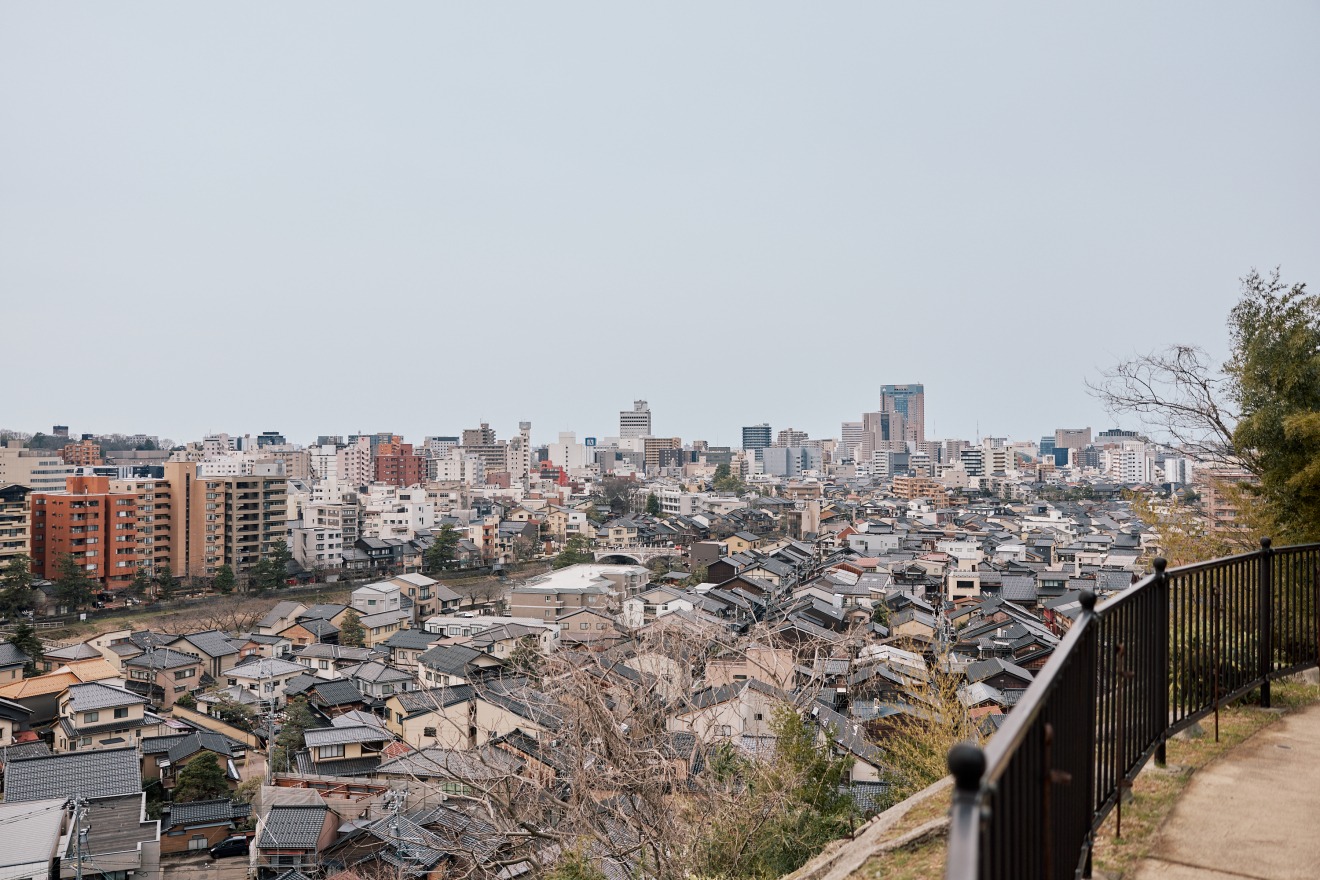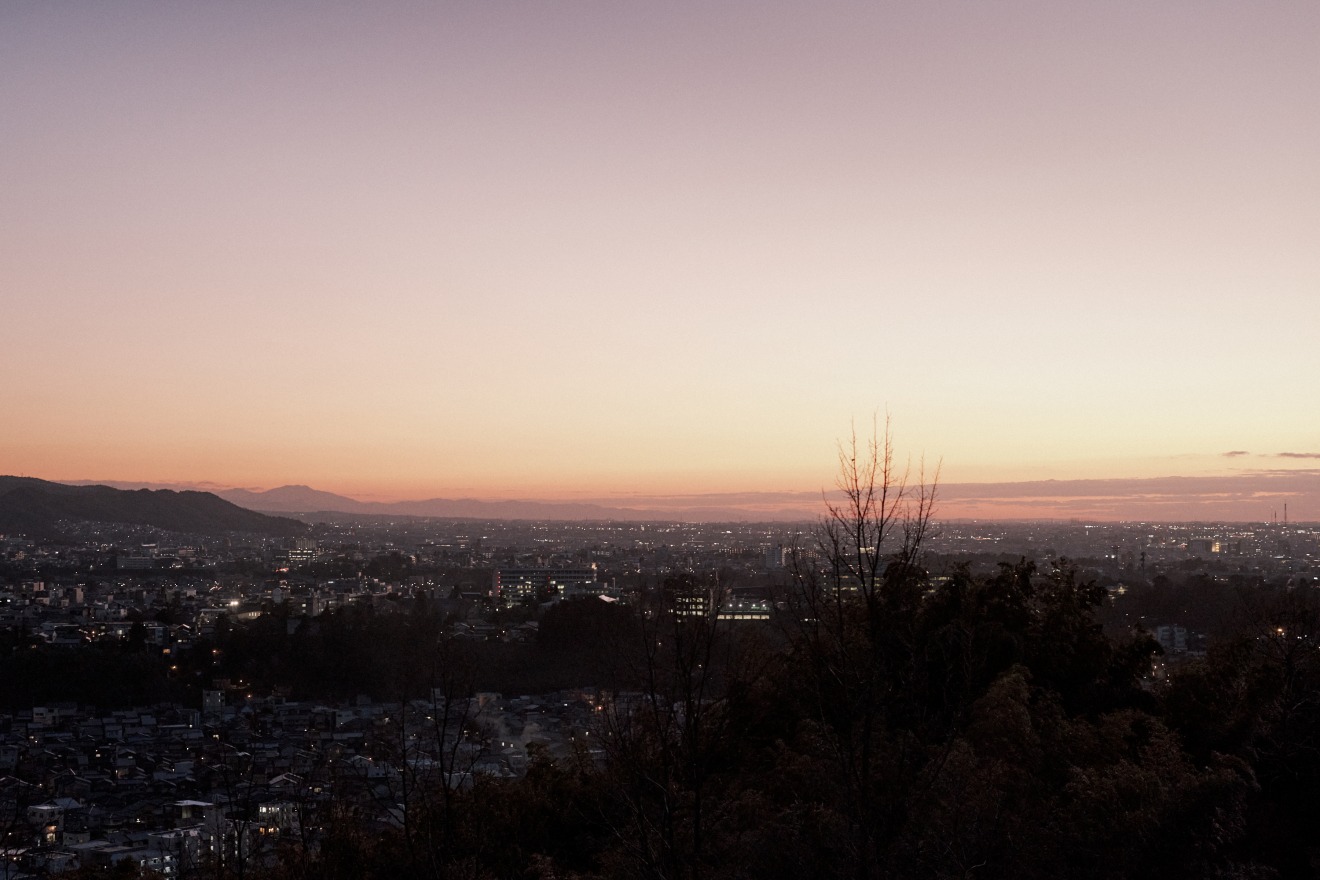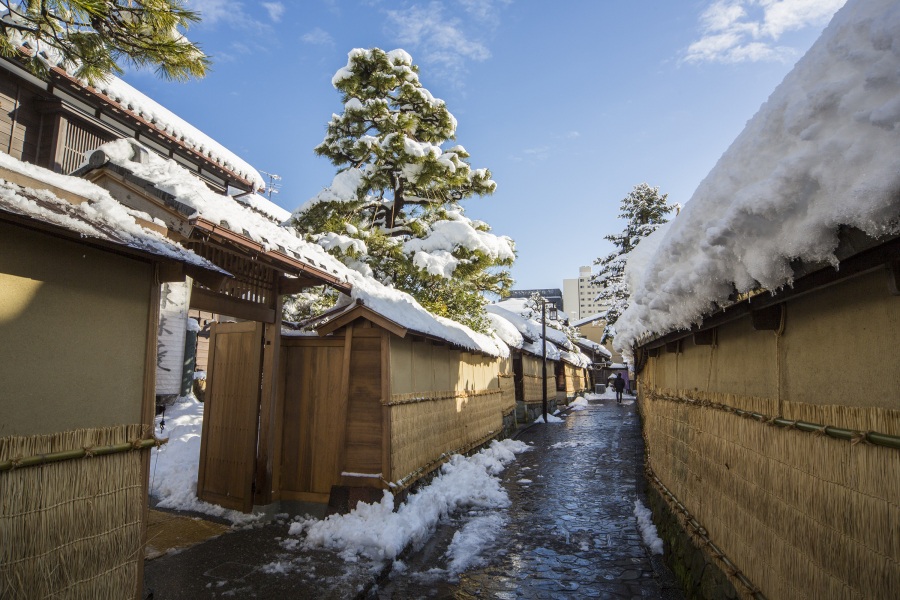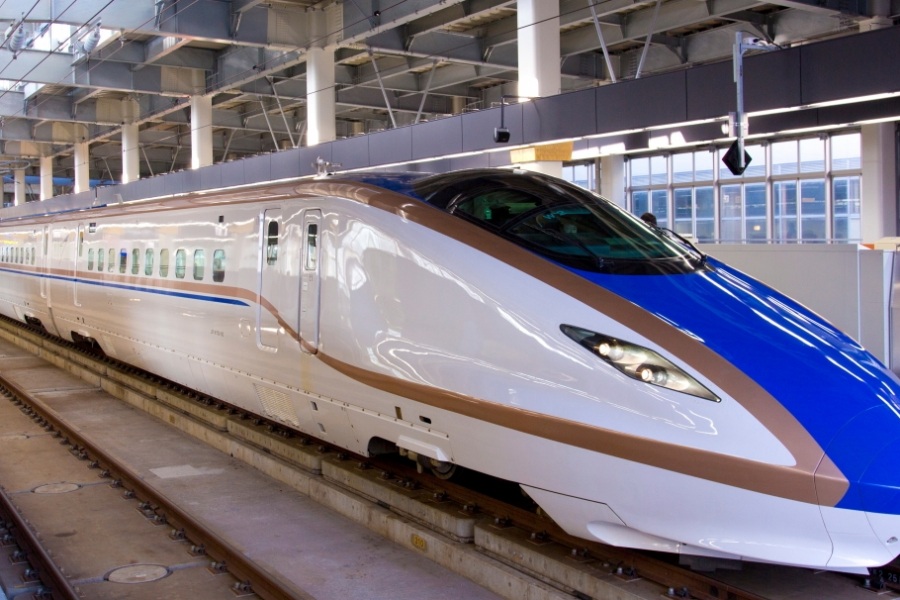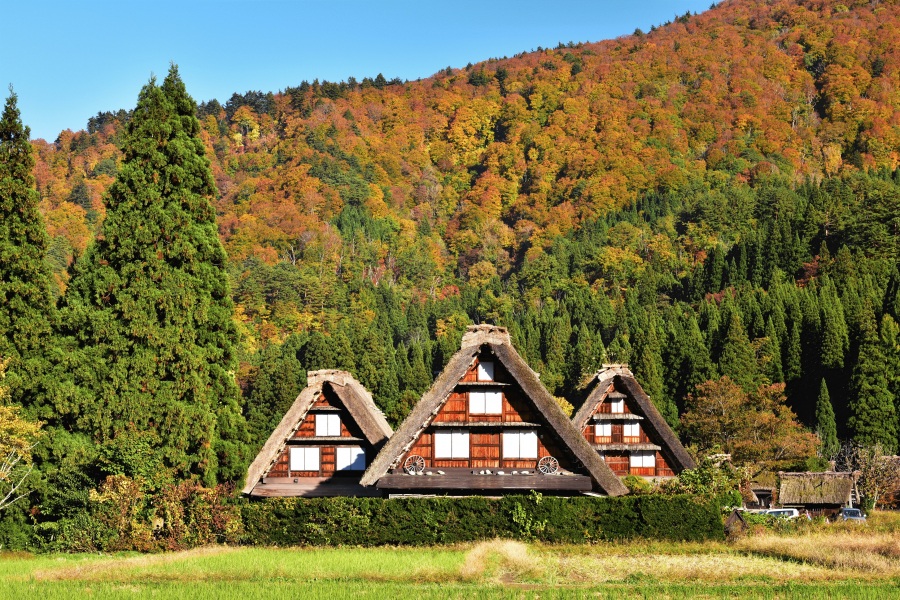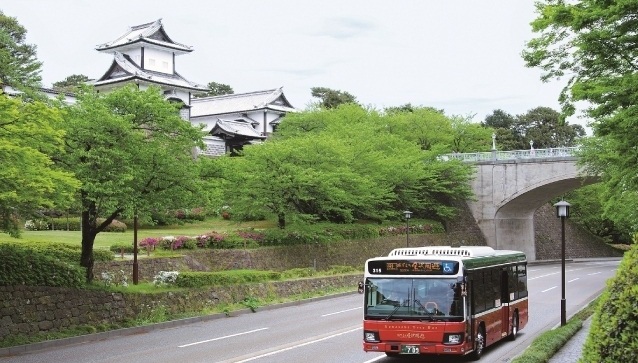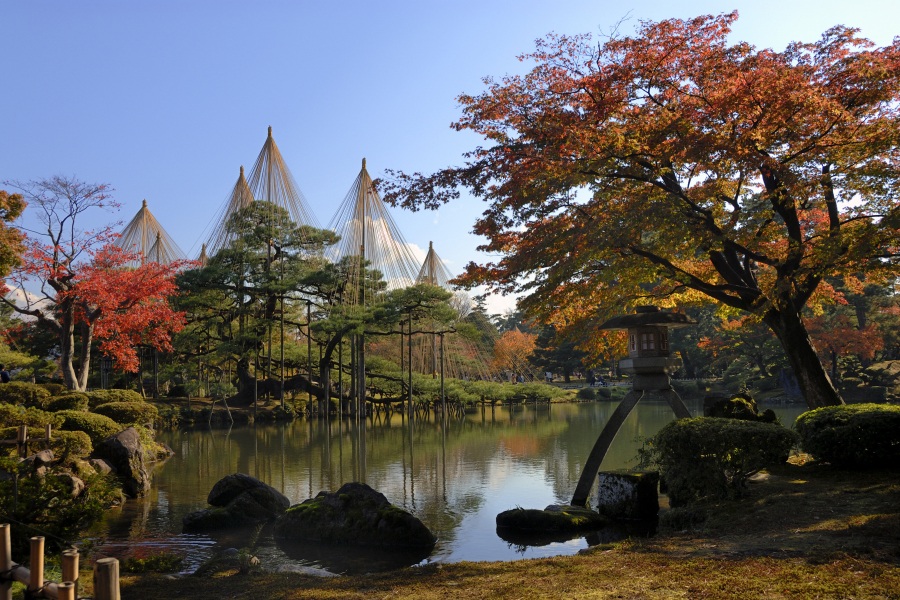THE BEST VIEWS OF KANAZAWA
In Kanazawa there’s no shortage of accessible lookouts over the city or stunning views. Because Kanazawa is blessed with great harmony between its natural and urban environments, views of the cityscape change distinctly from season to season. This means that there’s no perfect time in Kanazawa to find a best view. Luckily for visitors (and city residents), excellent views are available year-round – and are easy to get to.
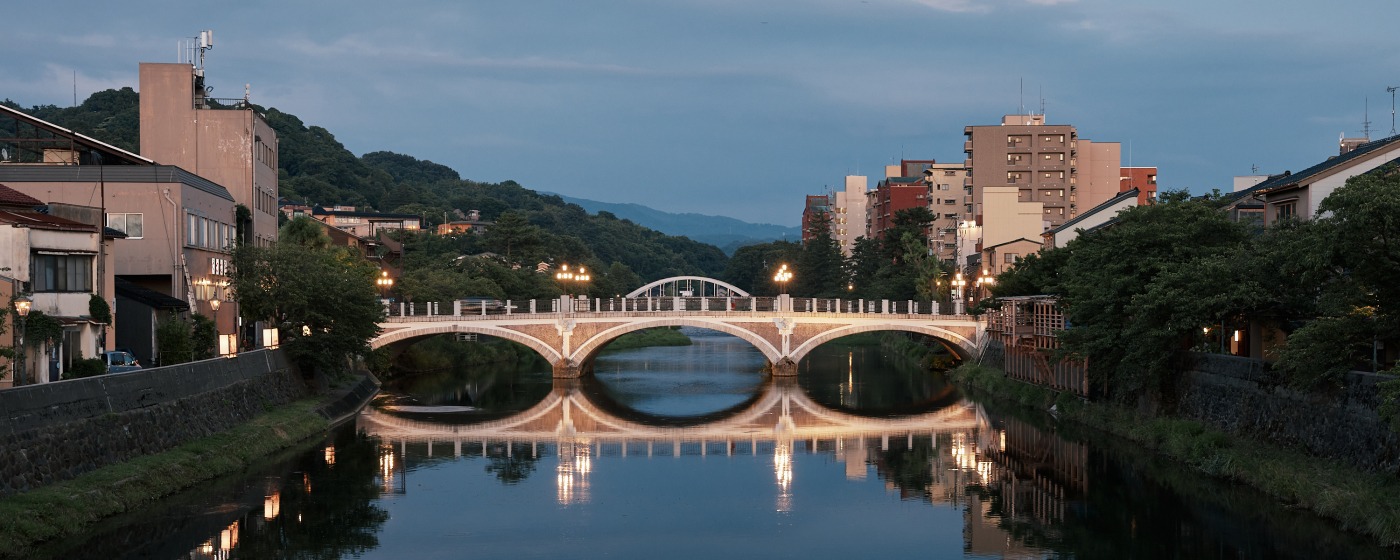
Saigawa Ohashi Bridge
Stepping onto Saigawa Ohashi Bridge, its heavy iron-and-steel frame offset by its delicate robin’s-egg blue color, visitors find themselves not only midway between Kanazawa’s best-known temple district (Teramachi) and entertainment area (Katamachi), but also suspended above the Sai River with beautiful views in the direction of both the Hakusan mountain range and the Japan Sea.
The Saigawa River is one of the most beautiful rivers in the Hokuriku region, though its beauty depends on your vantage point and what season you happen to view it. From Saigawa Ohashi Bridge, one can catch the Hakusan range snow-capped from early November until late April or early May. And because cherry trees line the riverbanks in both directions, in the spring the river wends through masses of pink blossoms. In the summer the trees burst with green leaves, which in the fall turn rich hues of gold and red.
Visible from the bridge, but even more apparent when walking along the river path, is a variety of birdlife nearly without peer in Japan. In the spring, summer, and fall, one often sees herons standing in the weeds and shallows along the shore, and heronries mark the river in several places closer to the sea. And from early spring until the end of summer, it’s a common sight to see people fishing for sweetfish, which the Japanese call ayu.
While Saigawa Ohashi Bridge is certainly impressive during the day, it’s perhaps most spectacular at night when it’s brightly lit. It’s then that the bridge glows radiantly between the dark river and sky; its bright blue frame lends color both to Katamachi and Teramachi; and the river in each direction reflects the moon when the weather is clear and building lights along the shore. Day or night, the views from Saigawa Ohashi Bridge are worth seeking out.
“W” Slope / Ishikiri Slope
Crossing Saigawa Ohashi Bridge toward Teramachi and walking upriver along Muro Saisei Street will bring you to another stunning view of the Saigawa River, this time from a higher elevation. This view is located from what is commonly referred to as “W” Slope, named for the W-shaped staircase leading from the riverside to Teramachi district above. In fact, “W” Slope is a relatively recent appellation, as the slope has four different historical names that trace back to the feudal era. The most common of these is Ishikiri Slope, whose name derives from a village of stonemasons located on this hill in the Edo Period (1603-1868).
The best time of year to climb “W” Slope is cherry blossom season, in early spring. The higher you ascend, and from the top landing when you reach it, both sides of the Saigawa River can be seen bursting with pink sakura. Although other popular cherry blossom viewing areas can be found in Kanazawa, the panoramic view that “W” Slope offers is hard to match.
The slope is worth visiting at any time of the year, however. It’s popular in summer, too, for the cooling shade its dense green foliage casts. Late in the year, the leaves of the cherry trees do their double duty after blossoming in the spring, painting the landscape in hues of gold and red from autumn’s rich palette.
Incidentally, if you climb “W” Slope at night, you may catch a glimpse of a ghost. Some people claim the slope is haunted, but others attribute this only to a cartoon long ago that set a ghost story on its steps.
And for those interested in literature, be sure to pause to admire the monument on the third landing. It is of the novel North Sea, written by the internationally famous writer Inoue Yasushi, who describes the slope and its surrounding area, which remains much as it was in the late 1920s when Inoue was a student at Kanazawa’s Fourth High School.
Asanogawa Ohashi Bridge
Many visitors to Kanazawa cross the Asano River going from Kazuemachi to Higashichaya, but few stop to appreciate the views from Asanogawa Ohashi Bridge. Like the Saigawa Ohashi Bridge, the views from it are equally worth seeing in the daytime or at night.
The bridge has an interesting history. Said to have first been built as a wooden bridge in 1594 by Toshiie Maeda (1538-1599), the founder of the Kaga Domain, the concrete arch bridge you see today was constructed in 1922, and until 1966 regularly conveyed street cars.
The bridge itself is a dividing line between four scenic districts: Kazuemachi with its beautifully preserved machiya; Namikimachi and its flagstone street and row of 400-year-old black pines along the river; the Higashichaya former geisha district; and the historic Higashiyama district with its many gold leaf businesses. From the bridge, one can see parts of all of these at once. So well-known is the Asano River that the famous Japanese artist Kawase Hasui immortalized it with two well-known shin-hanga prints.
The views from the bridge, of course, change with the seasons. Spring is full of cherry blossoms in late March and early April, especially in front of Kazuemachi’s historic machiya lining the river. Also in Kazuemachi, summertime sees traditional kawadoko wooden platforms built over the river, where customers can dine in the open air while being entertained by geisha.
In the other direction, come May 4th, Children’s Day in Japan, one can watch colorful koinobori carp streamers hung from the Plum Bridge and submerged in the river, and in June, coinciding with the city’s large Hyakumangoku Festival, one can see long bolts of Kaga Yuzen fabric washed clean in the river during Kanazawa’s one-day Yuzen-Nagashi event. Also coinciding with this festival and held on the Asano River at night is Kaga Yuzen Toro Nagashi. For this event, hand-painted silkscreen lanterns are released into the river behind the Tenjinbashi Bridge, where they proceed to flow towards the sea. And in autumn, the foliage on Utatsuyama colors the riverside nearly all the way to the Asanogawa Ohashi Bridge.
- Asanogawa River
-
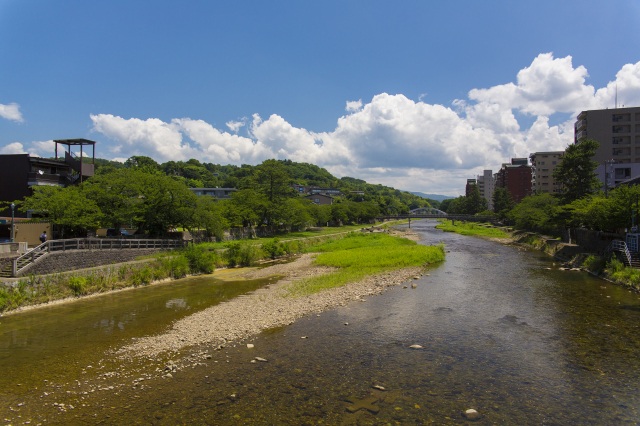
- Ume-no Hashi Bridge to Asanogawa Ohashi Bridge
- more
Hosenji Temple Overlook
In their explorations of Kanazawa, without even realizing it, visitors often wander to the edge of Utatsuyama, which is bordered on the west by the Higashichaya district and on the south by the Asano River. From either direction, if you climb up “Mt. Utatsu,” you will soon come upon Hosenji Temple.
The temple itself, which also has a small Shinto shrine on its grounds, is a popular attraction. The first ruler of the Kaga Domain, Maeda Toshiie, is enshrined here as the guardian deity. The walkway around the temple is shaded with large leafy trees and lined both with stone bodhisattvas and azaleas that bloom in spring and summer. It also has a large pine tree with five trunks connecting at its base. In the main hall stands a fierce-looking Nio statue, and behind the temple are dozens of old weathered Jizo statues looking over a moss-covered cemetery.
However, it’s perhaps the view from here that makes Hosenji most worth visiting. Donald Keene, the late eminent Japan scholar, gushed at this view as he watched the sun set over Kanazawa. Long before this, the Japanese writer Akutagawa Ryunosuke, while visiting Hosenji by invitation of Kanazawa writer Muro Saisei, declared Hosenji to have Kanazawa’s most magnificent view. And Izumi Kyoka, another famous Kanazawa writer, felt such a deep connection to Hosenji that he set his novel “Five Pines” here.
Hosenji’s panoramic view is stunning in the daytime, when visitors can clearly see the Higashichaya district and a myriad of black rooftiles representative of traditional Kanazawa machiya; the tree- and temple-lined Asano River; the Hakusan mountain range on the horizon; buildings beyond the river leading toward the city center; and even Kawakita Gate at Kanazawa Castle.
After the sun sets, the view changes dramatically. Darkness softens certain details in the landscape while nighttime illuminates it where the activity of people’s lives continues. No matter when you visit, however, Hosenji offers a chance to soak up the peacefulness of Kanazawa and the harmony of its natural and urban landscapes.
Farther up Utatsuyama are other spectacular viewpoints – Utatsuyama Park Lookout, Bokodai Lookout, and Miharashidai to name a few – but the view at Hosenji Temple is the easiest one to reach by foot, which is how most people choose to visit.
Text by Novelist David Joiner
Photo by Nik van der Giesen
